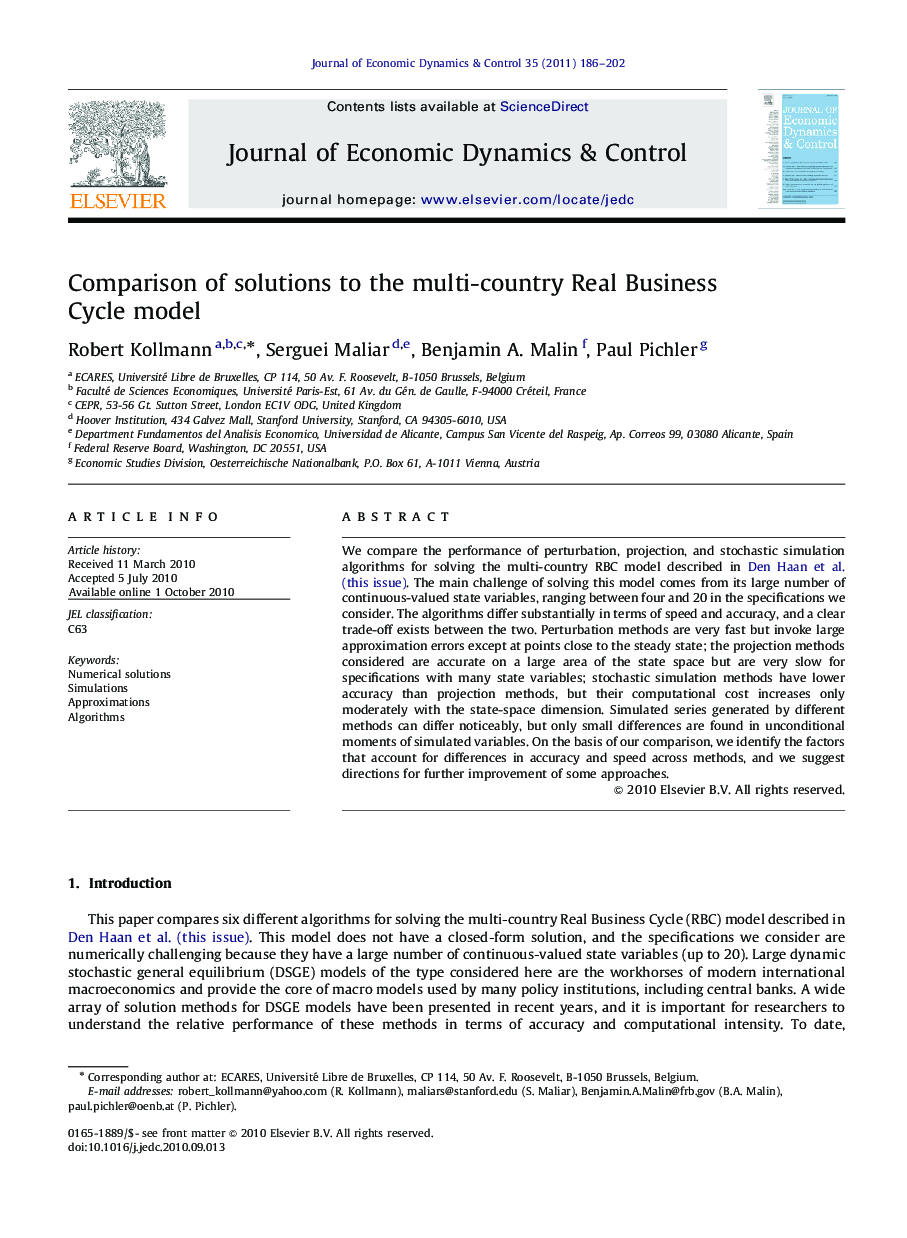| Article ID | Journal | Published Year | Pages | File Type |
|---|---|---|---|---|
| 5098878 | Journal of Economic Dynamics and Control | 2011 | 17 Pages |
Abstract
We compare the performance of perturbation, projection, and stochastic simulation algorithms for solving the multi-country RBC model described in Den Haan et al. (this issue). The main challenge of solving this model comes from its large number of continuous-valued state variables, ranging between four and 20 in the specifications we consider. The algorithms differ substantially in terms of speed and accuracy, and a clear trade-off exists between the two. Perturbation methods are very fast but invoke large approximation errors except at points close to the steady state; the projection methods considered are accurate on a large area of the state space but are very slow for specifications with many state variables; stochastic simulation methods have lower accuracy than projection methods, but their computational cost increases only moderately with the state-space dimension. Simulated series generated by different methods can differ noticeably, but only small differences are found in unconditional moments of simulated variables. On the basis of our comparison, we identify the factors that account for differences in accuracy and speed across methods, and we suggest directions for further improvement of some approaches.
Related Topics
Physical Sciences and Engineering
Mathematics
Control and Optimization
Authors
Robert Kollmann, Serguei Maliar, Benjamin A. Malin, Paul Pichler,
